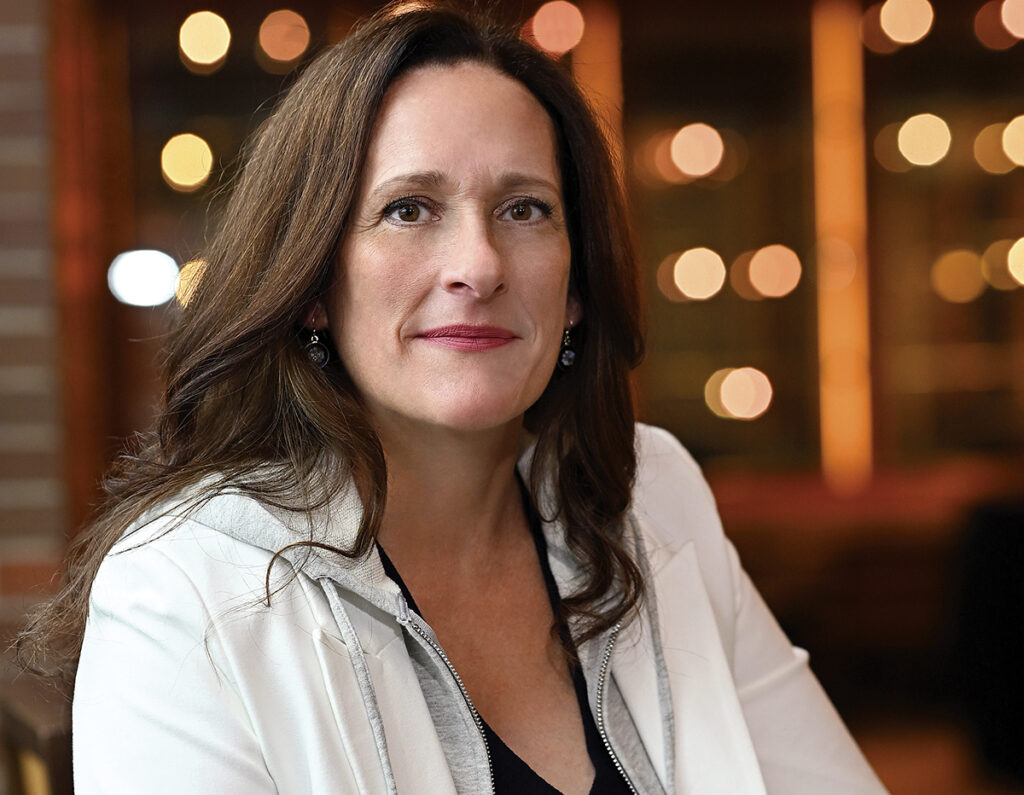In full BLOOM

Make your garden grow this spring
By Julie Janoski
Gone are the days of using a calendar to decide when to provide care for your trees and plants. A month-by-month gardening checklist is no longer recommended – or even necessary. Unpredictable weather due to climate change has rendered the calendar an unreliable resource. For example, in some years, the last frost date is in May; in some years, it’s in February. Sometimes the area gets lots of moisture in the spring; sometimes, it’s droughty. Instead, The Morton Arboretum’s Plant Clinic encourages gardeners to observe what is happening in their own yards. For example, check soil temperatures for good times to plant and mulch; keep your eye on the amount of rainfall your yard gets or use a rain gauge to know when to water your plants. Observe indicator plants, which will let you know there is a problem (the canaries in the coal mine), to understand when certain pests and diseases pop up; and start monitoring Growing Degree days, which measures the accumulation of heat that can be used to predict plant and insect development rates during the growing season. If that all seems like too much work, take a shortcut by subscribing to the Plant Clinic’s northern Illinois Plant Health Care Report, published bi-weekly from April through September on the Arboretum’s website, mortonarb.org. Now that you have a foundation for yard monitoring, here’s a list of the Plant Clinic’s Top 10 things to do in your garden in the spring and summer.
OBSERVE AND EVALUATE
Spring is a perfect time to see what’s going on in your yard. This needn’t be tedious. Pick a nice day and stroll around. (Tip: enjoy a cup of coffee or glass of wine during the process.) Every time you look at your garden critically, you learn something and understand how to make it better. Take notes or photos and ask yourself questions, like, did some plants not return after the winter? Are there areas that are flooded for days at a time? Is that shrub beyond saving? You may save yourself a lot of time, effort, and money by observing your garden and only doing what is needed when it is required. For instance, most plants in northern Illinois only need annual fertilization if they are particularly heavy feeders or your soil has been tested and lacks specific nutrients. Many newer cultivars are pest or disease resistant and don’t need regular pesticide applications. Annual pruning may not be required if you have selected plants that will only get as big as the space you have.
GARDEN CLEAN-UP
Waiting until spring to clean up the garden has several advantages. Unraked leaves left over from winter have several benefits. They protect the root zones of plants during cold periods, provide good insects with debris for overwintering, or birds may eat the seeds or fruit from uncut plants. Resist the urge to work in the garden if the soil is wet, as that can damage the structure of the soil, leaving it compacted. Like humans, plants need air and water, which are absorbed through their root systems. Compacted soil doesn’t have the porosity – or air holes – needed for that process to take place.
START A COMPOST PILE
Composting allows you to keep garden waste on your property and – when used properly – can supply your garden with a steady supply of nutrients. It doesn’t have to be complicated or even put in a pre-made bin. Use chicken wire and stakes, an old garbage can with holes punched in it, or stacks of bricks to corral your compost pile. To learn more about composting, visit the Arboretum’s website and search “composting.”
CREATE NEW GARDEN BEDS
Planting more gardens can benefit your health, enjoyment of your yard, and the environment. By creating new garden beds in the spring or early summer, you will have all season to enjoy them. Start a small vegetable bed to encourage healthy eating at your house. Create shade and eliminate some lawn space by planting a tree with a garden around it. Eliminating lawn space will save you money and time, as it requires water, fertilizer, and regular maintenance. Encourage pollinators, such as bees, butterflies, and other insects, by planting a garden that provides needed food sources, like the nectar from flowers.
PUT DOWN A LAYER OF MULCH
(or don’t!). Mulching provides numerous benefits for your plants, such as providing an insulation layer, conserving soil moisture, improving soil fertility, preventing erosion, and reducing root competition. However, mulching doesn’t necessarily have to be done every year. Check to see how much of the old mulch is still there. If there is still a three- to four-inch layer around trees and shrubs and a one- to two-inch layer in perennial or groundcover beds, put off mulching until the fall or next spring. Do the Weeding Early. Small weeds are so much easier to control than full-grown weeds. Being somewhat vigilant about pulling weeds early in the season will lessen the overall amount of effort required to keep the garden clear of invaders throughout the year.
PLANT AND TRANSPLANT
Spring has traditionally been considered the time to plant, but as long as temperatures have warmed, it’s not too hot, and you will be available to water them, you can plant throughout the growing season in this area. Plant or transplant trees and shrubs once the soil temperatures reach about 45 degrees to allow their root systems to start growing immediately. Divide perennial plants at this time as well, but wait to divide spring-blooming perennials until after they bloom. Warm-season vegetables, annuals, and containers should wait until the last threat of frost has passed. The AVERAGE frost date in northern Illinois is around Mother’s Day, but it has ranged from March to early June.
WATER WHEN NEEDED
Watering on a schedule can sometimes create more problems than it solves. Overwatering plants can leave the roots gasping for air and encourage diseases. Watering frequently but lightly may not supply trees and shrubs with adequate moisture. The best schedule for watering plants is need-based. Check the soil regularly by inserting a hand trowel or your finger a few inches into the soil to see if it’s dry. If the soil is still moist, you don’t need to water them yet. Watering deeply and less frequently will allow it to reach the root zone, giving you better results.
PRUNE EVERGREENS, AND SPRING FLOWERING TREES AND SHRUBS
Most plants are best pruned when dormant – during winter or early spring. Evergreens put on new growth in the spring and are best pruned after winter is over. For trees and shrubs that bloom in the spring, waiting to prune until soon after they bloom will eliminate the risk of pruning off the flower buds.
RELAX!
No garden is perfect. Bugs chew holes in leaves; plants don’t always grow the way you expect; new trees and shrubs can take some time to reach their full potential. Having a little tolerance for imperfection can lead to a garden that requires fewer inputs and lower maintenance, giving you more time to relax and enjoy it.
 Julie Janoski is the manager of the Plant Clinic, a leading source of science-based advice about trees, plants and landscapes at The Morton Arboretum. Call or email your tree and plant questions at
Julie Janoski is the manager of the Plant Clinic, a leading source of science-based advice about trees, plants and landscapes at The Morton Arboretum. Call or email your tree and plant questions at
630-719-2424 or plantclinic@mortonarb.org
*Photos provided by The Morton Arboretum













